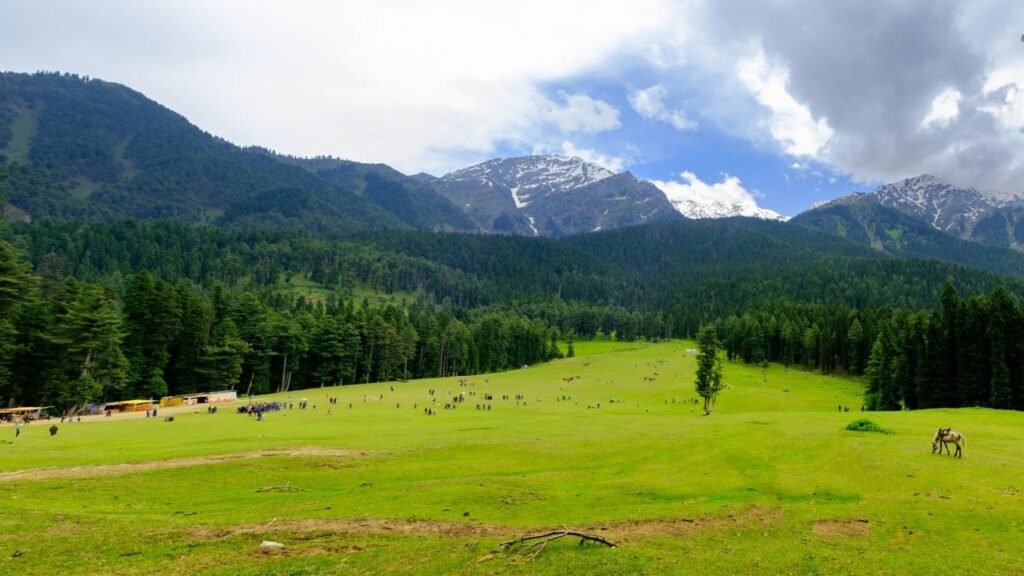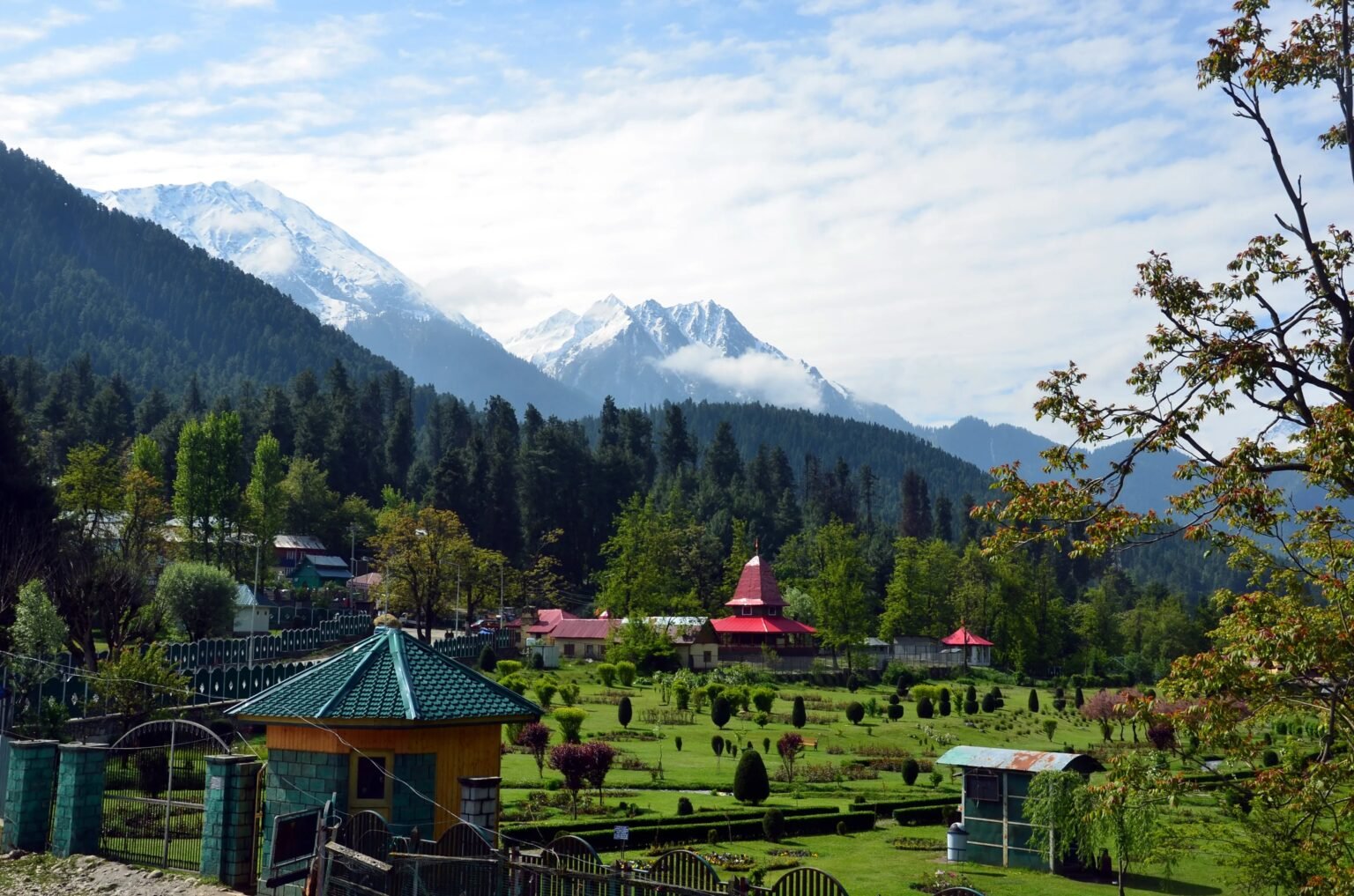In the aftermath of the April 2025 incident, Pahalgam continues to welcome visitors with enhanced security measures and a renewed commitment to sustainable and responsible tourism. Authorities and locals alike are working hard to ensure safety while retaining the welcoming spirit that makes the valley so beloved. Rebuilding confidence, strengthening communal harmony, and celebrating local culture are now centre stage in Pahalgam’s tourism rebound story, illustrating the resilience of both nature and people in this mountain paradise.
Pahalgam is a stunning hill station in the Indian state of Jammu & Kashmir, renowned for its breathtaking landscapes, rich history, and deep-rooted cultural heritage. Below, you’ll find an in-depth exploration of this Himalayan jewel, covering its history, culture, main attractions, access routes, economic role, location, and answers to top FAQs about the area.
Introduction to Pahalgam
Pahalgam is often referred to as the “Valley of Shepherds,” thanks to its pastoral scenery and its historical roots as grazing land for nomadic tribes. Located at an altitude of 2,740 meters in the Anantnag district, it lies on the banks of the pristine Lidder River and is surrounded by the majestic Himalayas. Pahalgam stands out as a crown jewel of Kashmir, attracting visitors with its mesmerising meadows, ancient temples, and adventure opportunities.
Location and Accessibility
Pahalgam is situated approximately 92 km from Srinagar, the summer capital of Jammu & Kashmir, and roughly 140 km from Gulmarg. The nearest airport is Sheikh ul-Alam International Airport in Srinagar, making it easily accessible for domestic and international tourists. The region is also well-linked by road, making Pahalgam a convenient part of many Kashmir travel itineraries.
- By Air: Land at Srinagar, and then a taxi or bus will take you 96 km to Pahalgam.
- By Rail: Udhampur and Jammu are the closest railway hubs.
- By Road: State buses and taxis ply frequently from Jammu, Srinagar, and Anantnag, using the smooth National Highway 44. Expect a picturesque drive with stunning views of lush valleys and snow-capped mountains along the way.
Historical Significance
Pahalgam is steeped in myth and legend. It’s believed by Hindus to be the place where Shiva himself rested and left Nandi the bull before proceeding to the Amarnath cave. Ancient texts associate the area with sages seeking enlightenment, while local temples, such as the 12th-century Mamleshwar Temple, preserve these traditions.
Originally inhabited by shepherds and pastoral communities, Pahalgam has seen a succession of rulers, from ancient Hindu dynasties to the Mughals, Afghans, Sikhs, and eventually the British. Each has left its mark on the town’s heritage, from Mughal-era structures to colonial buildings and Sikh shrines.
Cultural Heritage
Pahalgam’s multicultural fabric is woven from its Hindu, Sikh, and Muslim communities. The area is also a starting point of the annual Amarnath Yatra, one of India’s most important Hindu pilgrimages. This massive religious procession brings a seasonal influx of pilgrims, infusing the region with a spiritual vibrancy and cultural exchange.
Locals are known for their warm hospitality, with a way of life centred around farming, animal husbandry, crafts, and tourism. Kashmiri cuisine thrives here, expect fragrant dishes like Rogan Josh, Dum Aloo, and Yakhni, often savoured with saffron-infused Kahwah tea.
Tourist Attractions
Pahalgam is famed for offering both soulful serenity and exhilarating adventure. Here are the top spots and experiences:
- Betaab Valley: Green meadows framed by snowy peaks, named after a popular Bollywood film shot here.
- Aru Valley: A haven for trekkers and nature lovers; gateway to hikes and horse rides.
- Baisaran: Known as ‘Mini Switzerland’, this lush valley features rolling pastures, pine forests, and panoramic views.
- Chandanwari: The starting point of the Amarnath Yatra; it’s a snow wonderland in winter and spring.
- Sheshnag Lake: A mystical glacier lake, part of the Amarnath Yatra trek, surrounded by legends and camping sites.
- Kolahoi Glacier: Accessible via a challenging trek from Aru, this glacier and its dramatic setting make for a bucket-list adventure.
- Mamleshwar Temple: An ancient Shiva shrine that draws devotees and history lovers alike.
- Lidder River: The river is ideal for trout fishing, white-water rafting, and picnics by the banks.
- Pahalgam Golf Course: An 18-hole course set amidst mountains, a rare treat for golf enthusiasts.
- Local Markets: Shops fill with carpets, woollens, pashmina shawls, saffron, and hand-carved walnut wood souvenirs.
Travel Route and Best Time to Visit
The most popular route to Pahalgam is from Srinagar, either by taxi or public bus, following scenic highways. It is a recognisable segment of classic Kashmir circuit tours, often paired with trips to Sonamarg, Gulmarg, and Dal Lake in Srinagar.
The best time to visit depends on preferred activities:
- March-June: Enjoy pleasant temperatures and lush greenery, perfect for sightseeing and picnics.
- July-August: Peak pilgrimage season (Amarnath Yatra) with vibrant spiritual atmosphere; travel is busier.
- October to February: Winter transforms Pahalgam into a snowy paradise, perfect for skiing, snowboarding, and cosying up by the fire.
Local Economy & Revenue
Tourism is the backbone of Pahalgam’s economy, accounting for a significant share of local income and employment. Seasonal activities, such as the Amarnath Yatra and winter sports, generate revenue for hotels, restaurants, transportation providers, and local handicrafts. There’s also a steady income from horticulture, especially apple orchards and saffron cultivation.
The influx of visitors does put pressure on municipal resources, particularly in terms of waste management and biodiversity conservation. The local government and organisations actively work on sustainable tourism initiatives to balance economic gain with ecological care.

Unique Culture and Events
Traditions in Pahalgam thrive in local music (Kashmiri folk and Sufi songs), art (wood carving, handloom), and cuisine. The annual Amarnath Yatra is both a spiritual and cultural event, drawing thousands of pilgrims and shaping the town’s identity.
Festivals like Eid and Diwali are celebrated with warmth, reflecting the town’s diversity and unity. The natural landscape is also a muse for artists and filmmakers; in fact, parts of many Bollywood classics were filmed in Pahalgam’s valleys.
Safety and Recent Developments
As of 2025, Pahalgam is generally safe for tourists, with improved road infrastructure and modern hospitality amenities. However, there was a tragic event in April 2025 when a militant attack at Baisaran valley resulted in loss of life, and security remains a top priority. Travellers should stay informed and heed local advisories during times of political tension.
FAQs about Pahalgam
What is Pahalgam best known for?
Pahalgam is most famous for its alpine landscapes, meadows, adventure sports, the Amarnath Yatra, and its status as a health and holiday resort.
How do you travel from Srinagar to Pahalgam?
Pahalgam is 96 km from Srinagar. One can travel by taxi, state-run buses, or private cars via NH44, with a travel time of about 2-3 hours.
When is the best time to visit Pahalgam?
March to June is ideal for pleasant weather; July to August is for pilgrimage; and October to February is for those seeking snow and winter activities.
Is Pahalgam safe for tourists?
Yes, Pahalgam is generally safe, though travellers should be aware of regional advisories, especially during the yatra season or in times of unrest.
What are the top places to visit in Pahalgam?
Betaab Valley, Aru Valley, Baisaran, Chandanwari, Sheshnag Lake, Kolahoi Glacier, and Mamleshwar Temple are among the must-see sites.
What types of adventure sports are popular in Pahalgam?
Pahalgam is a hotspot for trekking, white-water rafting, trout fishing, skiing, and golfing.
What are some local food specialities in Pahalgam?
Try Kashmiri Rogan Josh, Dum Aloo, Yakhni, Gushtaba, and the saffron-laced Kahwah tea.
Can visitors participate in the Amarnath Yatra from Pahalgam?
Yes, Pahalgam serves as a primary base for starting the trek to the Amarnath cave, especially from Chandanwari.
Are there good shopping options in Pahalgam?
Yes, local markets feature Kashmiri handicrafts, pashmina shawls, saffron, dry fruits, and woollen wear.
